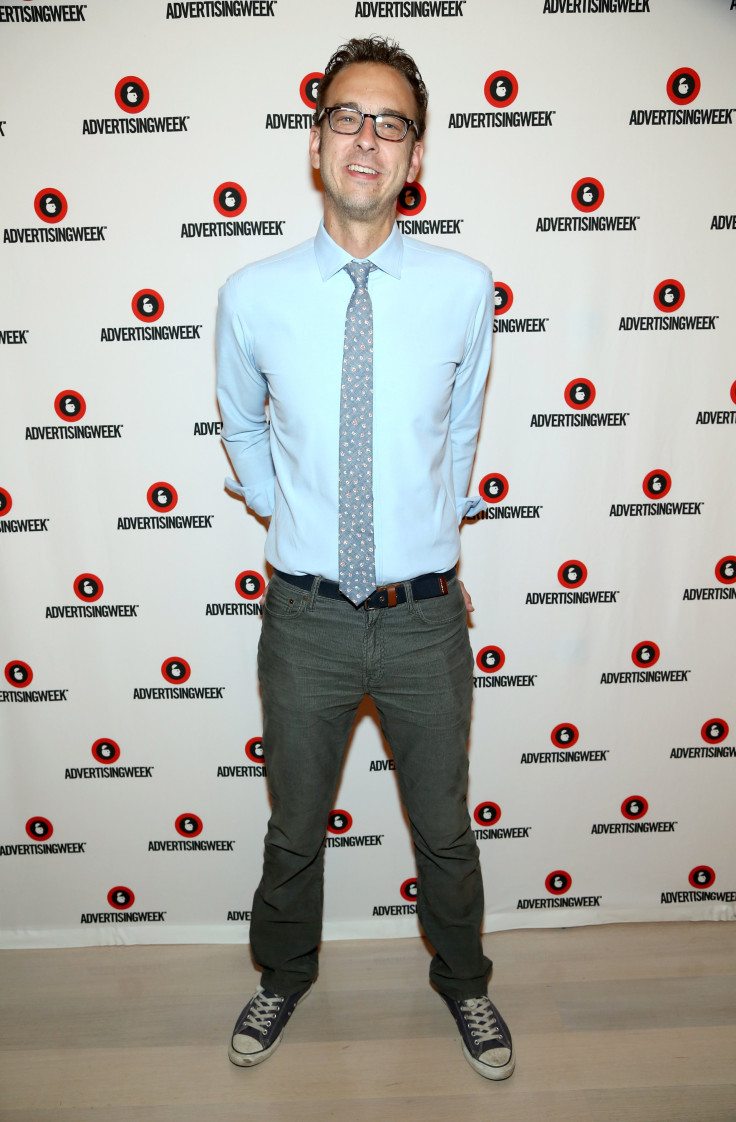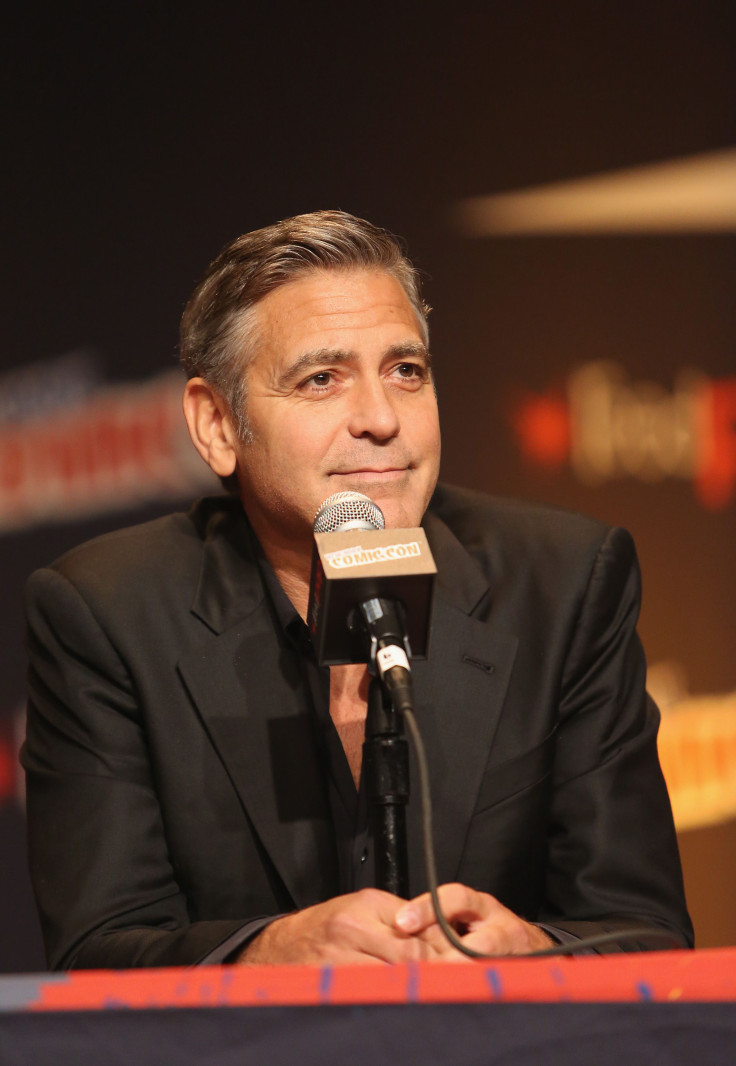New York Comic Con Boss Lance Fensterman On Keeping Fans Happy And Safe, How NYCC Differs From San Diego

New York Comic Con boss Lance Fensterman says it is all about the fans -- no easy task! Over 150,000 of those fans attended the 10th edition of the massive convention, dressed in costumes depicting everything from superheroes, to "Stars Wars" characters, to Anime heartthrobs; waiting in long lines to hear speakers and panels as varied as "The Walking Dead" writer Robert Kirkman to "Goosebumps" star Jack Black; and spilling out from its longtime home at the Javits Center to locations across the city, including the legendary Hammerstein Ballroom. Oh, and there were comics too.
The event is a lot to manage. On Sunday afternoon -- just hours before the close of the convention -- Fensterman, the Senior Global VP of ReedPOP, which produces New York Comic Con (San Diego Comic Con is a separate institution), was upbeat, if a little overwhelmed. Sitting in a conference room overlooking, literally, thousands of exhibitor booths in the convention's famed Artists' Alley, the producer told International Business Times that his chief concern each year is pleasing the show's fans.
Read the full interview below:
International Business Times: Barring any last minute snafus, has this year been a success?
Lance Fensterman: Success is happy fans and there is a lot of happy fans. I would say we’re pleased.

IBT: What fires have you been putting out?
Fensterman: All of our fires are quite boring. It has to do with logistics. We always say logistics are the framework that fun hangs on. If you don’t get the framework right then people don’t have as much fun. So, getting people in, getting people out safely, getting them around, making sure people are where they need to be to do what they want to do, all facilitates [the fans’] enjoyment.
IBT: You mentioned safety. With preventing mass shootings being such a topic of debate right now, what goes through your mind and what preparations do you have to make?
Fensterman: We don’t talk about specific preparations that we make, but the visible things that you see are we do bag checks, we have dogs, and we do weapons checks because there is a lot of cosplaying here. We have a room of confiscated weapons. My favorite is an actual chainsaw -- because that’s ok to take to a convention? I think the guy’s excuse was ‘there is no gas in it.’
There is a lot of visible things we do and there’s a lot of things that aren’t as visible just to keep the show safe and to let people have fun. That’s what they are here to do.
IBT: Where do you draw the lines with the weapons, because there is a lot of elaborate stuff on the show floor?
Fensterman: We are actually very specific on our website about what is acceptable and what’s not. Although, we actually had somebody that brought a “Legend of Zelda’ sword and it was wood and we confiscated it because hardwood is not allowed, but the person was a little bummed and little upset because it was balsa wood, which is actually acceptable. That’s a softwood. The level of specificity we get into is intense. People work on these costumes all year, so it’s important we get it as right as possible, but any time we are unsure we are going to err on the side of caution.
New York Comic Con is indeed rather specific on their website, requiring colored caps for prop guns, soft tips for prop arrows, and prop weapons to be made of cardboard and foam, etc. The rules end with the summation, “Basically don’t be an idiot.”
IBT: So, what does ten editions of Comic Con mean to you?
Fensterman: It means a lot of time spent in this building (The Javits Center). I hope what it means is getting better and making a better experience for fans every year and not making the same mistake twice. Seeing something grow from the basement to the entire venue and bursting out into the city now -- It’s exciting to be able to build this for a passionate fan community.
IBT: Other than the scale, what has been the biggest change since year one?
Fensterman: The quality. Last year we had George Clooney. Year one -- I’m not even sure who we had. The participation of leading writers and artists, all the way to film and television. The quality of the content we are now bringing to the fans has grown exponentially.

IBT: The definition of what can be at Comic Con is getting broader and broader. A lot of the shows and movies here are really on the fringes of “geek” culture. How do you see the future of Comic Con’s identity changing?
Fensterman: I think we always will keep comics at the core. If you look at our guest list, it’s predominantly comics and if you look at Artists’ Alley, it’s the largest Artists’ Alley in the country. So, that will always stay at our core, but beyond that you do want to play a little bit. We started doing these beer and comic panels a few year ago. Is that core? Well, it’s art on labels, right?
We’ve tried to expand in other areas that are tangentially related to our core, but the beauty of pop culture is it’s massive, it’s constantly redefining itself, and it’s always changing. So, this show is a perfect platform for people to interact with it and learn about different strands of popular culture and for different brands to reach those people and share.
IBT: So you don’t worry about getting too far from your roots? Have you heard any criticism from fans?
Fensterman: You are always walking a fine line. The thing about popular culture is it’s always expanding so there is a long tail and people are fans of all different niches and genres. So, you try to do your best to provide a well rounded experience and give a little bit of content for everybody, but you are always walking a fine line. ‘You should have more of this.’ Why do you have so much of that?’ There are a lot of tribes within the “geek” world.
IBT: Aside from, obviously, being on a the east coast, what does New York Comic Con provide that San Diego Comic Con can not?
Fensterman: For starters, it’s a reflection of the city -- the energy of it. The people that come are New Yorkers and from the New York area, so that gives you a little different energy.
Also, San Diego is really such a great institution, but I also think it attracts a lot of repeat fans. It’s a tradition. Interestingly, about 40 percent of our fans either do not go to any other show or it’s their first convention. Here you’ll get a fan at a DC panel going, ‘What is Green Lantern?’ So, I think it’s a different audience and a less seasoned and, maybe, a less jaded audience. So, it’s fresh eyes, that New York energy, and [New York] is where publishing is based and where comics were born.
Somebody made the comment to me that you get less execs and C-suite guys that come, so there is more for the fans. That’s not a knock. That’s a great audience to have. It’s just different.
IBT: It sounds like that would make New York a more ideal platform for producers to debut content to new fans, where as San Diego might be more preaching to the choir?
Fensterman: There’s value to everything though, because that choir makes for great taste-makers. So, there is value in all different audiences and that’s why I think many of these events thrive.
IBT: When do you start working on next year?
Fensterman: There’s two things we do immediately, about three weeks after the show. We survey all of our fans and it’s fairly lengthy. My entire team’s pay is based on how happy the fans are. So, they don’t get paid as much if the fans aren’t happy or happier than last year. We get a ton of detailed data and we combine that with our staff’s observations in a giant fix-it list. Out of that list comes strategy and new things we want to do and then we just start building it. So, it’s a 12-month cycle to build this show for sure.
IBT: Any idea what some of those new things might be?
Fensterman: I don’t know. I’m going to sleep for two days and then I’m going to get on it.
© Copyright IBTimes 2025. All rights reserved.






















